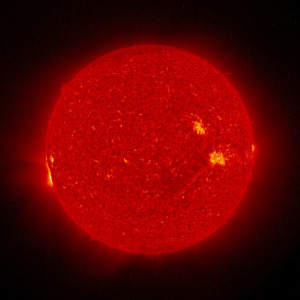What Is Solar Energy?
How is Solar Energy Good for You?
What is solar energy is a question that many people are asking. To answer the question it is worthwhile to ask three more questions:
Two related topics are the history of photovoltaic power and the benefits of solar energy
2 Definitions to What Is Solar Energy
I looked into the definition online and in dictionaries. The definitions I liked the most are:
- Radiation from the Sun that can produce heat, generate electricity, or facilitate chemical reactions. Solar energy is inexhaustible and nonpolluting
- Energy derived ultimately from the sun. It can be divided into direct and indirect categories
What is the Sun?
Amazingly, only after Albert Einstein hypothesized that matter can be converted to energy, scientists started to grasp the mystery of the Sun as an energy source. The sun is a gigantic sphere of mainly hot gases and it gets denser toward its center due to the gravitational force pulling all its mass toward the center. As a result, the very inner core is so dense that the pressure and heat are both unbelievably high. The Hydrogen nuclei (Hydrogen is the most abundant element in the Sun), are in a frenzy movement and occasionally two nuclei of hydrogen are smashed together to create a Helium nucleus and radiation energy. This is what happens in an H-Bomb and what scientists hope to acheive in a controlled way in a fusion reactor. Since the Sun is so-o big and so many Hydrogen nuclei are fused, even though the Sun radiates to all directions with only a small fraction of its radiation is directed toward Earth, the radiated energy hitting Earth in one hour can provide all our energy needs in one year! This fusion reactor in the sky is doing so for 4.5 billion years and it will continue to do so for at least another 4 billion years.
How is solar energy used on Earth
 Pictured attributed to jmayer
Pictured attributed to jmayerLife is dependent on Sun radiation. Plants use a chemical process called photosynthesis to convert minerals, carbon dioxide and soil nutrients to a live organism. Grass eating animals feed on plants, carnivorous animals feed on grass eating animals. The whole food chain is possible only in the presence of sun radiation
Plants decayed millions of years ago and covered under other decayed plants produced coal. Similarly, decayed small animals produced crude oil. As of the beginning of the Industrial Revolution, fossil fuels (mainly coal, crude oil and crude oil byproducts) are used to produce electricity and to provide the fuel for cars, trains and air-crafts. Depletion of these resources will occur within the life time of our future generations and therefore fossils cannot be considered as a sustainable energy source. NCG, natural gas is the last cry as of 2011, we will see what are the environmental consequences of NCG harvesting. One thing is sure - this new "bonanza" will delay the development of clean power generators
The ultimate goal is to harness the “inexhaustible and nonpolluting” sun radiation and get rid of human kind dependency on burning fossils. In the next paragraph I’ll explain how solar energy can be exploited on earth
How can Solar Energy be used on Earth
Once we understand what is solar energy we can see how solar energy can be used here on Earth.
Solar radiation can be converted to heat (solar thermal energy), a fine example is heating water for residential uses. Another example is Heliostats (Sun Towers) that produce high pressure/high temperature steam to run a steam electrical turbine. Using the photovoltaic effect the solar panels can convert Sun radiation directly to electrical power (solar electric) to be used by utility scale solar power plants and by residential solar power generators
Understanding what is solar energy is a foundation to further understand what is a Solar Power Home
click to view my Home Page
